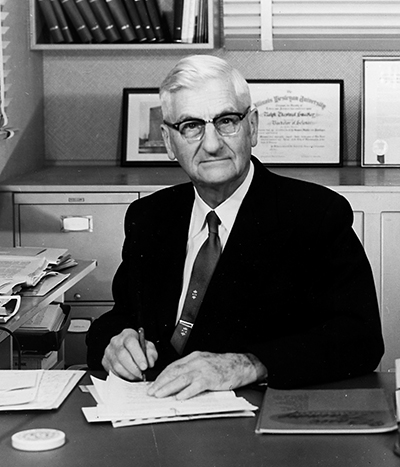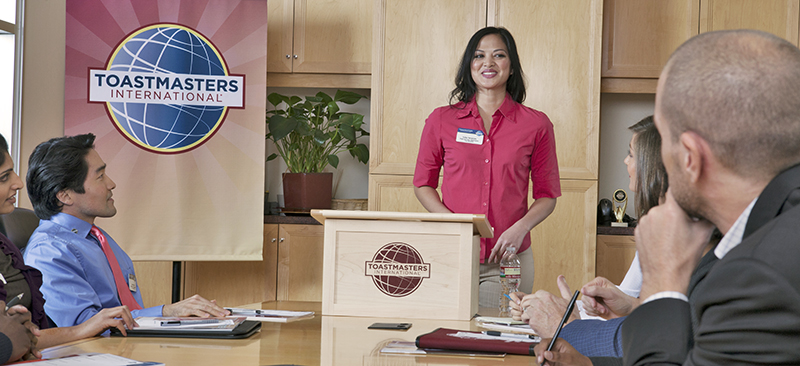
Ralph C. Smedley wrote his first Toastmasters publication in 1928 to provide a small group of club members a framework for learning public speaking skills. He would be proud of the success of the education program offered by the organization today.
It was with the same goal of member support that Toastmasters Pathways development team designed Toastmasters Pathways using the most current research in adult learning. The focus on the future was important, but it wasn’t the only consideration. We also looked back to the origins of Toastmasters and the vision of its founder.
In developing Pathways, much time was spent reviewing current educational content. The team wanted to be sure the wisdom in the current program and Smedley’s vision continued on—well-placed and relevant in the new program. In an effort to understand the full intent of the current manuals, we took the time to review Smedley’s original writing.
With a great deal of pleasure, we discovered how well Smedley’s view of the education program was aligned with the organization’s vision for Pathways. First and foremost, the new education program is for and about you, the member. At its core, it is designed to develop members’ public speaking skills. It is also focused on helping you identify and nourish other, possibly latent, skills and talents.
With a great deal of pleasure, we discovered how well Smedley’s view of the education program was aligned with the organization’s vision for Pathways.
Smedley believed that by building and practicing public speaking skills, other skills would be uncovered and developed. His hope for all Toastmasters members was that they would go on in their lives with enhanced confidence and leadership, thinking and listening skills. To this end, he included very few parameters around the projects in his manual. His view appears to be that the work of developing topics, speeches and the content belonged to the member.
This view is reflected in his earliest evaluations, called Criticisms. These evaluations addressed questions relating to the topic of each speech, such as, was it relevant? Did the member communicate the intended message? It wasn’t enough to put together a speech, it had to be a well-designed, relevant speech to succeed and score well on the established evaluation of the day.
Shifting Views
Over time, many of the original tenets of the first Toastmasters evaluations and speeches were changed to accommodate shifting views on learning and to encourage members to participate in a clear, well-defined program. The original 12 projects, or topics as Smedley called them, ultimately became the Competent Communication manual. Higher level skills were moved into advanced manuals.
With so much research available today about adult learning and the way we process new information and develop skills, it became clear that Smedley’s first take on how skills would be developed was correct; the more open ended and comprehensive the project could be, the more likely members were to feel a sense of ownership while developing their speeches and the more they would gain.
To fulfill the goal of building confidence and speaking skills and to provide members with the opportunity to practice listening, speaking, interpersonal communication and leadership, the projects in Pathways were designed with flexibility and challenges in place. As with the current education program, support will be provided to all members within their clubs as they face challenges and develop skills.
The projects themselves represent a paradigm shift in how we view the support an education program can provide. In recent years, support in the manuals included information such as topic suggestions along with smaller-scale, shorter-term projects. Though each of these things can be effective, they are not ideal to encourage and support member growth.
The support provided in Pathways is about tools. Tools for outlining speeches, tools for organizing content, and—when members move into higher level projects—tools for completing large projects and building leadership skills.

Public speaking and leadership are not separate and disparate skills. They are, as Smedley viewed them, combined and integrated into the development of confidence. In the projects that make up Pathways, once confidence begins to grow, then members move into a broader and more complex system to apply what they have learned. One of the development team’s greatest hopes is that members will begin to see themselves as capable of taking on larger, more complex projects by succeeding in the Toastmasters environment of safety and support.
Once members achieve success in their clubs, they can transfer those skills out into the world–into their Toastmasters districts, other organizations, the workplace, their personal relationships, even politics and government. It was Smedley’s hope that members would parlay what they learn in their clubs out into their communities.
The Value of Lifelong Learning
Another of the most important points of view that the developers share with Smedley is a strong belief in lifelong learning. It isn’t enough, and never has been, to complete a few public speeches and be done. This fact made Smedley reluctant to develop content around his lessons. The new education program demonstrates a commitment to lifelong learning by offering a broad spectrum of projects with many different topics to keep members engaged over time and through changes in individual needs and goals.
As responsibilities change and shift in life and career, our needs change as well. Members who join Toastmasters to practice public speaking so they can feel confident giving a toast at a family member’s wedding may find that over time, they want to speak to a less familiar audience. Some members have a particular talent they would like to share on a broader scale by speaking, posting to a blog or developing a podcast. Toastmasters has always provided a place for members to try new things.
This commitment to personal growth and development continues with Pathways. There are many unique projects and paths designed around specialized goals, such as conflict resolution and change management. Though the topics and challenges are different, the goal is the same. All projects include public speaking. Many projects provide an opportunity for members to practice interpersonal communication and leadership when they choose. It is open, as it has always been, for members to select and design their learning.
As Smedley knew in the earliest days of the organization, members need to have full ownership of their learning and their progress to be successful. He understood that he could offer a small inkling of what members could do, but in the end, they would forge their own paths. The more time spent among Toastmasters developing skills and practicing, the more members gain in confidence and ability.
The development of the content in Pathways is the next step forward in Toastmasters learning, but it is anchored in the first, most important beliefs and understanding of our founder:
In the course of years, as we gained experience, it was seen that our processes had values far beyond the mere training of people to face audiences and speak their ideas. Communication was seen to have its effects in almost every phase of life. Improvement was needed not only in public speaking, but in all use of words, whether spoken or written. Training in speech had definite values in many lines of improvement.
Some of these may be listed thus: It leads to the discovery of hidden abilities, bringing these latent talents into use, and thus enriching the individual’s life. It broadens the person’s conception of how to live with people. It helps in the integration of personality. It brings out for use the leadership traits and abilities, and thus helps to prepare the individual to be a leader.
It opens the way to more creative and constructive living for the person who takes full advantage of the opportunities offered.
—Ralph C. Smedley, Personally Speaking



 Previous
Previous
 Previous Article
Previous Article